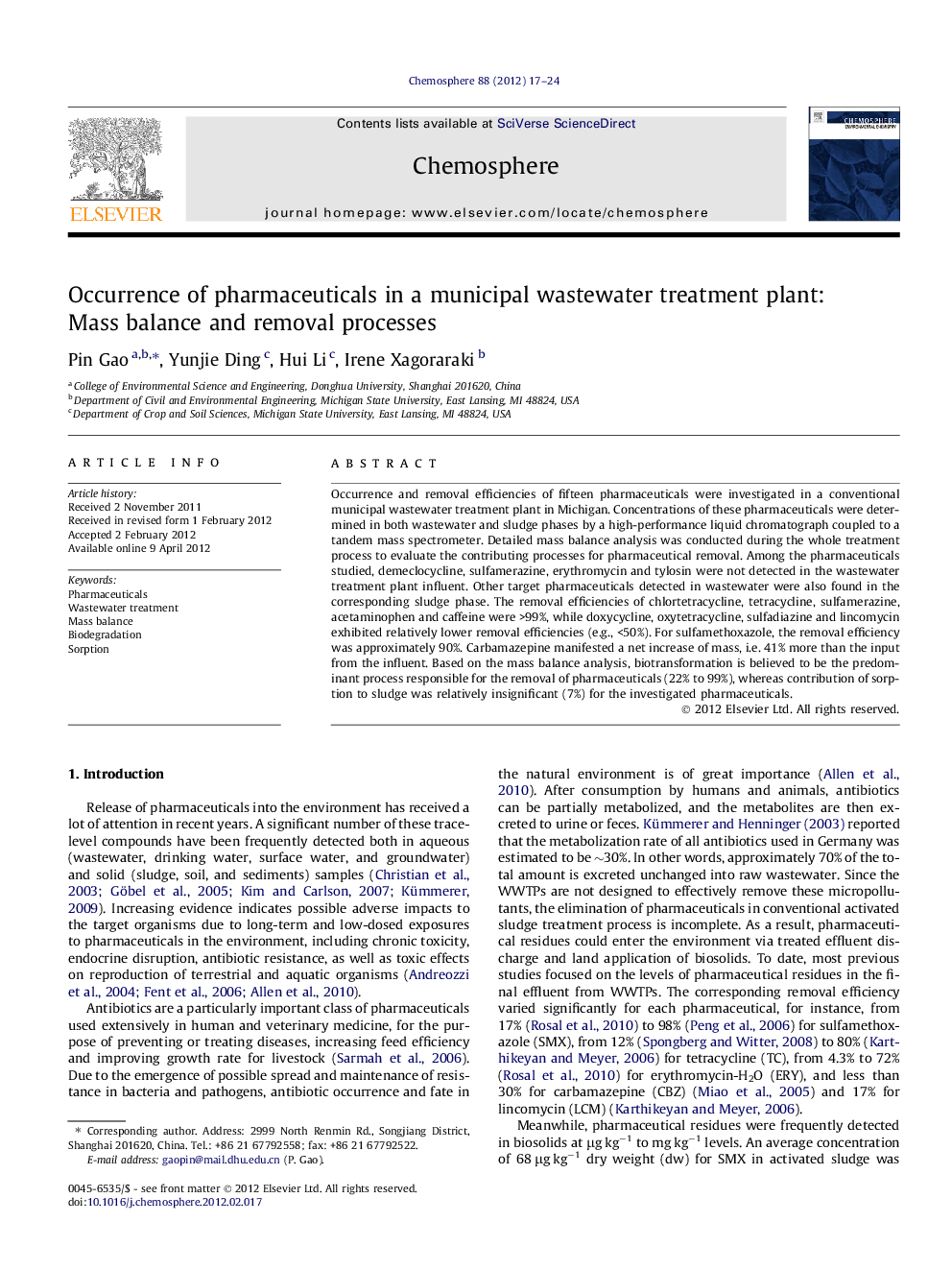| کد مقاله | کد نشریه | سال انتشار | مقاله انگلیسی | نسخه تمام متن |
|---|---|---|---|---|
| 4410258 | 1307536 | 2012 | 8 صفحه PDF | دانلود رایگان |

Occurrence and removal efficiencies of fifteen pharmaceuticals were investigated in a conventional municipal wastewater treatment plant in Michigan. Concentrations of these pharmaceuticals were determined in both wastewater and sludge phases by a high-performance liquid chromatograph coupled to a tandem mass spectrometer. Detailed mass balance analysis was conducted during the whole treatment process to evaluate the contributing processes for pharmaceutical removal. Among the pharmaceuticals studied, demeclocycline, sulfamerazine, erythromycin and tylosin were not detected in the wastewater treatment plant influent. Other target pharmaceuticals detected in wastewater were also found in the corresponding sludge phase. The removal efficiencies of chlortetracycline, tetracycline, sulfamerazine, acetaminophen and caffeine were >99%, while doxycycline, oxytetracycline, sulfadiazine and lincomycin exhibited relatively lower removal efficiencies (e.g., <50%). For sulfamethoxazole, the removal efficiency was approximately 90%. Carbamazepine manifested a net increase of mass, i.e. 41% more than the input from the influent. Based on the mass balance analysis, biotransformation is believed to be the predominant process responsible for the removal of pharmaceuticals (22% to 99%), whereas contribution of sorption to sludge was relatively insignificant (7%) for the investigated pharmaceuticals.
► A detailed mass balance analysis for pharmaceuticals was performed in a wastewater treatment plant.
► Most of the pharmaceuticals detected in aqueous phases were also found in sludge samples.
► Percent removal of the detected pharmaceuticals ranged from 22% to almost complete elimination.
► Biodegradation was believed to be the predominant process responsible for the removal of pharmaceuticals.
► The contribution of sorption to sludge was relatively insignificant for these pharmaceuticals.
Journal: Chemosphere - Volume 88, Issue 1, June 2012, Pages 17–24